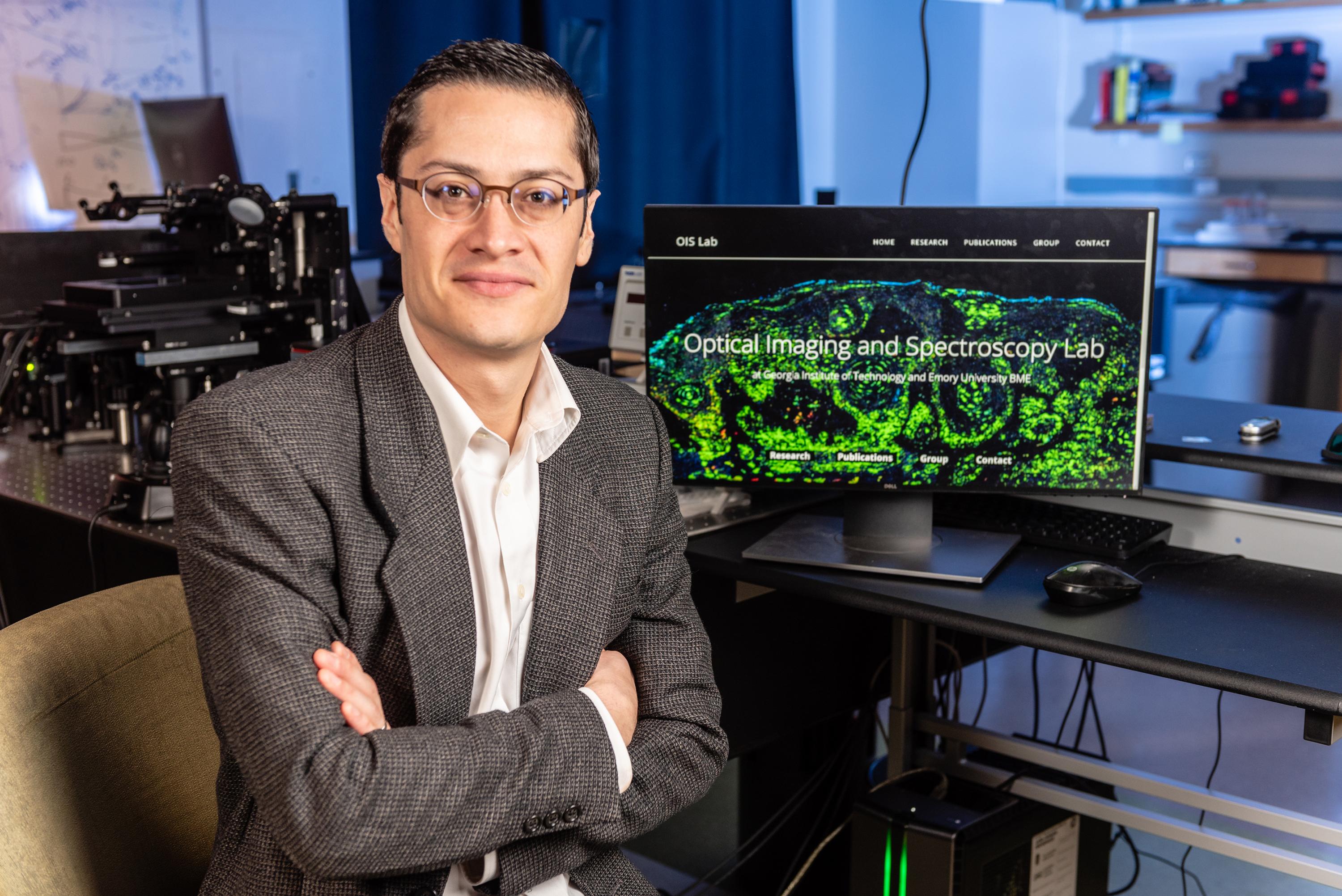
Dec 02, 2021
An interdisciplinary team of researchers from the Georgia Institute of Technology has received a $2 million federal grant to create tools that will provide the clearest three-dimensional images yet of the chemical and biomolecular interactions between plants and the soil in which they grow.
At just a few inches underground, the rhizosphere — the thin strip of earth that includes the soil-root interface — has so far been difficult to visualize on site. If scientists can build instruments that capture in real-time clearer images of the physical associations of microbes attached to roots, along with the oxygen-carbon-nitrogen chemical exchanges they mediate, it could help mitigate the effects of climate change and lead to the development of more sustainable fuels and fertilizers.
“From a microbiological perspective, we have catalogued what microbes are in the root zone and how abundant they are,” said Joel Kostka, professor in the School of Biological Sciences and School of Earth and Atmospheric Sciences at Georgia Tech. “But there's been very little work to understand their dynamics under real soil conditions.”
Kostka, who also serves as associate chair for Research in Biological Sciences, joins Marcus Cicerone, professor in the School of Chemistry and Biochemistry and principal investigator for the new grant from the U.S. Department of Energy’s Office of Biological and Environmental Research. The research team also includes Francisco Robles, assistant professor in the Wallace H. Coulter Department of Biomedical Engineering, and Lily Cheung, assistant professor in the School of Chemical and Biomolecular Engineering in the College of Engineering.
Together, the researchers plan to produce a new optical instrument that will provide 3D images of dynamic metabolic processes with chemical specificity — meaning it will be able to identify carbon sources (sugars, organic acids) exuded by plant roots and nitrogen-rich compounds provided to the root by nitrogen-fixing (diazotrophic) microbes. The instrument will be built with commercially available components, and with an eye towards simplicity so that it can be easily leveraged by Department of Energy (DOE) Bioenergy Research Centers and field sites.
A ‘hotspot for microbes’ in 3D
Understanding more about the metabolic processes happening in the rhizosphere will help the DOE develop a wider range of sustainable products like new types of biofertilizers and biofuels. The research will also help create practices for better crop management — and will help researchers use plants and soil as more effective carbon traps that sequester greenhouse gases from the atmosphere into the soil.
“The problem is that we don’t know much about the free-living bacteria in the soil, because we can’t get in there and look,” Cicerone said. “The DOE wanted somebody to build an instrument that would allow them to image or gather information about the metabolic processes, the interaction — the metabolic interactions between the microbes and the plants, in real time.”
Kostka adds that the rhizosphere is “a hotspot for microbes.”
“It’s often where the plant is communicating with the outside world,” he explained. “Our goal is to develop an instrument that they (the DOE) can use to better understand those interactions between plants and microbes and how those can be tweaked, say, to optimize plant production, crop production, biofuels and biomass production. And that's the long-term goal for us.”
How light gets scattered, smothered, and covered in soil
Cicerone says the visibility issue with soil involves how photons — or particles of light — scatter once they hit the soil. He likens it to someone putting a red light up to the back of their thumb.
“You turn your thumb around, your thumb glows red, right? So, the light comes through, but most of it scatters. The unscattered light contains the spatial information, but it is so weak that you can’t detect it by eye, and you lose the spatial information. The same thing happens with the soils. You get a lot of light scattering, and you lose spatial information,” Cicerone said.
Cicerone and Robles will build instrumentation that will focus light into the soil and that is “exquisitely sensitive to the minuscule amount of light that only scatters when it reaches its target.” Evaluating that light will help scientists learn even more about the chemical processes in the rhizosphere.
The visibility enhancements will be implemented in optical techniques with names like coherent Raman scattering and optical coherence tomography, which are commonly used for non-invasive imaging of thin biological material, like the retina of the eye — or the tiniest of plant roots.
“We learn two things from the light coming out of the sample. The amount of light coming out tells you about the refractive index of the material, and the light’s frequency change tells you about the chemical composition of the material,” Cicerone explained.
It’s through imaging and then optimizing those microbe-plant interactions that the DOE aims to design more sustainable products and practices, based on the chemistry to be learned from the team’s new optical instruments.
“This is a three-year funded project, and we hope at the end of the three years to have an experimental system, where we can do something that nobody else can do,” Cicerone added. “And that is that we can follow the biochemistry under the soil, in situ, in real time, to clearly see what's going on there and find out what the microbes really are doing in natural conditions. At that point, we can start manipulating the biology, start doing the experiments that the DOE is primarily interested in.”
Award Number: DE-SC0022121
Title: Deep Chemical Imaging of the Rhizosphere
Institution: Georgia Tech Research Corporation, Atlanta, GA
Principal Investigator: Cicerone, Marcus
About Georgia Institute of Technology
The Georgia Institute of Technology, or Georgia Tech, is a top 10 public research university developing leaders who advance technology and improve the human condition. The Institute offers business, computing, design, engineering, liberal arts, and sciences degrees. Its nearly 40,000 students representing 50 states and 149 countries, study at the main campus in Atlanta, at campuses in France and China, and through distance and online learning. As a leading technological university, Georgia Tech is an engine of economic development for Georgia, the Southeast, and the nation, conducting more than $1 billion in research annually for government, industry, and society.



